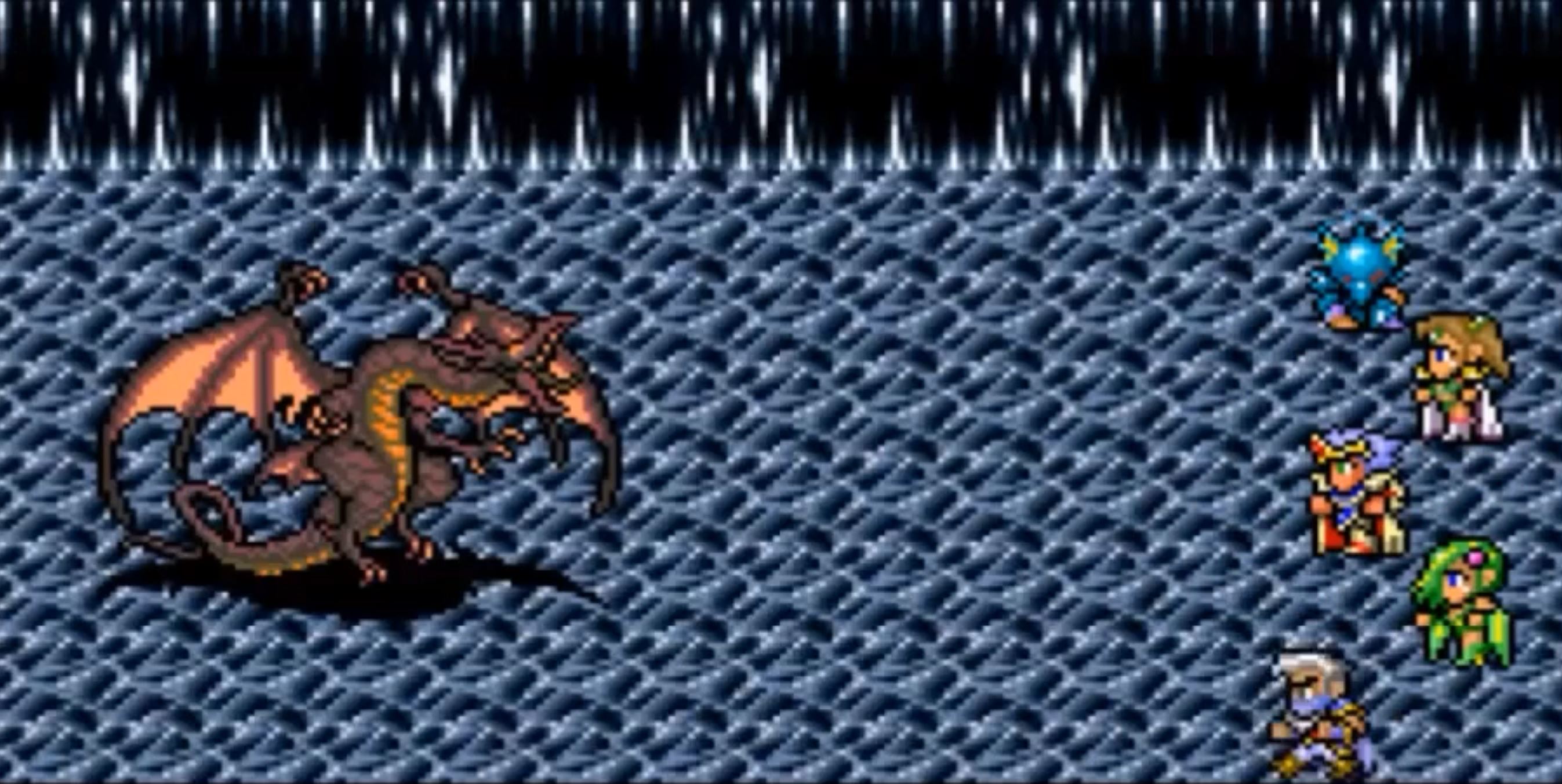Final Fantasy IV represented a series of firsts for the franchise. Not only was it the first Final Fantasy game developed for the SNES/Super Famicom, but it introduced the iconic Active Time Battle (ATB) system to the series. It turns out those events were related, but the creation and refinement of the ATB system may have not gone down exactly how you think it did.
For those unfamiliar with the ATB system, traditional JRPG mechanics dictate that every character, be they a controllable party member or an enemy, takes turns during battle. In early Final Fantasy games, the heroes go first, followed by the monsters. But in Final Fantasy IV’s ATB system, every character is governed by a meter that fills up. Once it’s full, they can fulfill a variety of actions.
However, the game doesn’t pause while players are deciding what move their characters should make. ATB meters still fill, and if a player takes too long, an enemy will act while they’re still strategizing. This change added a layer of urgency to Final Fantasy IV’s combat. Interestingly enough, the troubled development of that mechanic also fostered a sense of urgency amongst Final Fantasy IV‘s creative team.
Recently, Square Enix released the second part of an interview with Final Fantasy alum Hironobu Sakaguchi, Kazuko Shibuya, and Yoshinori Kitase. This latter half of this interview focused on Final Fantasy IV through VI, which were all on the SNES and, more importantly, all utilized the ATB system.
According to Sakaguchi, the SNES’ increased power was a big part of the inspiration for the ATB system. He stated that the Final Fantasy team had always tried to improve the battle system with each new entry. One such enhancement was the introduction of summons in Final Fantasy III, which were only created to fill extra space on the game cartridge. Since Final Fantasy IV was going to be the first Final Fantasy title on the Super Famicom, the team felt the need to make something “special.” So the game’s battle planner, Hiroyuki Ito (who you probably best know as one of Final Fantasy XII’s directors) came up with the basic idea of the ATB system.
If you’re a longtime Final Fantasy fan, you probably already know most of that information. Ito is often credited as the father of the entire ATB concept. However, there’s a huge gap between coming up with an idea and implementing that idea, and that’s where the ATB idea almost fell apart. Sakaguchi recalled that the original ATB system’s prototype was abysmal. No surprise there, but according to him, the test wasn’t just bad; it wasn’t fun either (a cardinal sin in game development).
What was the problem? Well, in a 2021 interview, Final Fantasy designer Takashi Tokita explained that the original version of the ATB system was actually modeled after F1 races. The idea was to have “everyone act in turn based on who was fastest.” However, it seems that the original version of this system didn’t properly account for things like individual character power levels, unique abilities, and…well, balance. According to Tokita, the speed and chaotic nature of the process basically turned Final Fantasy IV into a button masher that encouraged you to perform actions as soon as you were possibly able to.
The team knew they needed help refining Ito’s vision for a more active battle system. The task soon fell to programmer Kiyoshi Yoshii. Despite having an awesome name, Yoshii is far from a household name among Final Fantasy fans despite having worked as a battle system programmer since the first Final Fantasy. While Yoshii wasn’t one for small chat (according to Sakaguchi, he always responded to questions with a grunt), he was, in Sakaguchi’s own words, a “genius-level programmer.” Yoshii buckled down and refined the ATB system, and in the end, he produced the battle mechanic Final Fantasy veterans know and love.
So while Ito is rightfully credited for both the core concepts of the ATB system (along with many other franchise innovations), if it wasn’t for Kiyoshi Yoshii, Final Fantasy IV’s ATB system might not have been polished enough to become a series staple.
